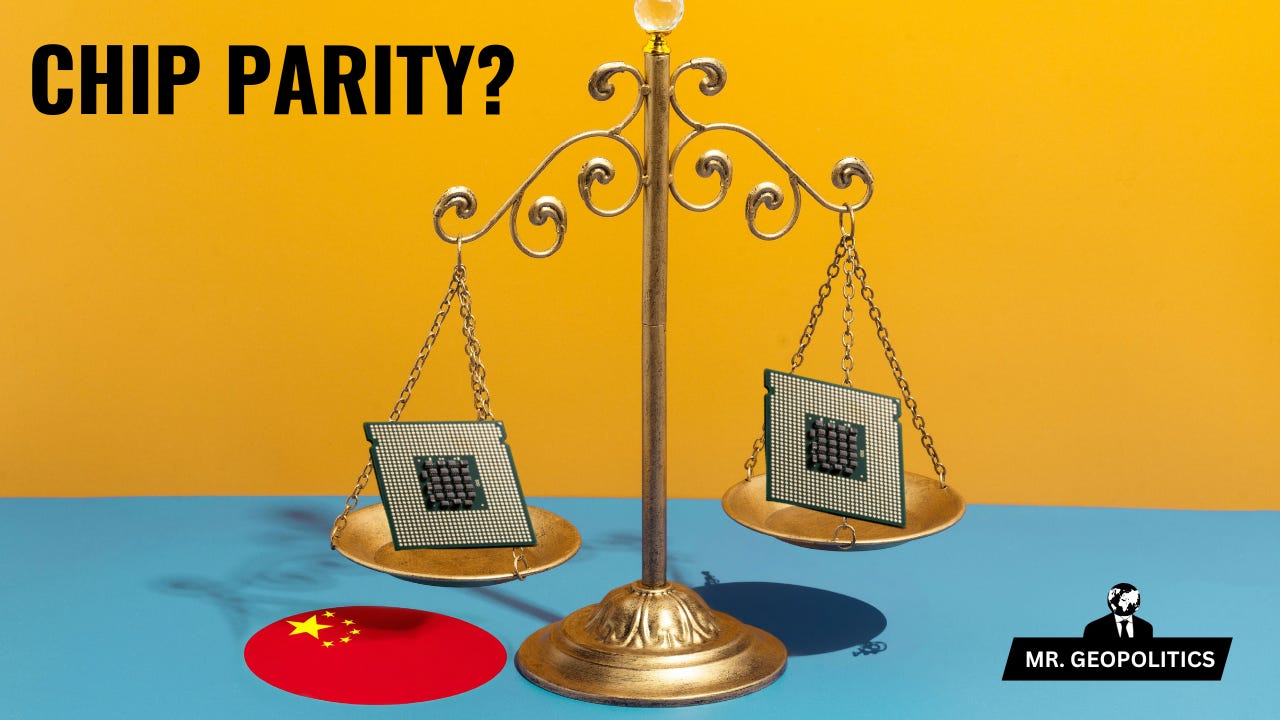China Approaches Chip Parity With America
Just not the way the world expects
Just a year ago, it was believed China was decades behind America in AI. Then the DeepSeek moment happened with the release of the R1 model, reportedly costing just $5.5 million and trained on 2,048 Nvidia chips, yet advanced enough to compete with OpenAI’s o1 reasoning model.
This was stunning. In 2023, OpenAI was spending upwards of $700,000 a day on computing infrastructure. Training GPT-5 alone reportedly cost OpenAI upwards of $500 million. On paper, China had underspent yet matched America in a strategic AI vertical. And in the process, the Chinese firm had shattered the illusion that America was leaps and bounds ahead of China in AI.
CLOSED SAFE
Of course, the claim that DeepSeek only spent $5.5 million has been challenged. Some say the company had access to 50,000 Nvidia GPUs, procured for as much as $1.6 billion. If proven true, it would challenge China’s frugal innovation engine and the fundamentals of America’s export control regime.
However, the effect of DeepSeek remains:
The reality is that all certainty about China is gone (again). The world is back to viewing China as a “closed safe,” where nobody really knows how advanced China is in terms of technology or military.
This closed safe of China expands beyond AI and into chips. The recent headlines, however, shed light on what could be China’s next DeepSeek moment: chip parity with America.
REDEFINING CHIP PARITY
The Chinese government is subsidizing up to 50% of the energy bills for large data centers in the country. In tandem, China is ejecting foreign chips from state-backed data centers. This is no coincidence. These are signals that China may be nearing chip parity with America, just not the way most expected.
Chip parity was always about China matching America’s ability to develop and produce advanced semiconductors. But what if this has been the wrong definition the whole time?
Instead of matching America’s chip production, China could replace American chips with local chips and still fuel its economy with the same capabilities and power. The Chinese approach may be to stack enough local chips together, with a surge of cheap energy and huge government subsidies and incentives, to permanently shift China’s reliance on American semiconductors.
This means China can derive the same gains from local chips, as it could from US and European chips. This is chip parity, and it is completely different to the traditional ideas. Thanks to a flurry of self-reliance moves, China may be closer to this point than most realize.
GREY GEOPOLITICS*
("*Grey Geopolitics” is a concept/expression of Abishur Prakash/The Geopolitical Business, Inc)
This throws the US-China fight, in particular around technology, into a grey zone. If China reaches this point, potentially in the coming months, a sign of how quickly the ground is shifting, it will not mean that China has overtaken America in advanced chip-making. Yet, China may have begun replacing a growing number of American chips within the local market as its sovereign chip development journey reaches critical mass.
This is not to say that the Chinese chips are more advanced or sophisticated. On the contrary, they are not. A source of Chinese national pride, Huawei’s Ascend 910C, only offers 60% of the performance of the Nvidia H100. And this was from researchers from DeepSeek!
However, while this has kept America at ease, this may no longer matter for China. A decade ago, when Chinese chips only had 10% of the performance of American chips, it was one thing. But today, 60% or 70% changes applications and deployment.
AMERICA WATCHING?
Most have been approaching the US-China technology fight as black-and-white. But this has never been the case. It is not about China overtaking America in technology. It is about China’s reliance on American technology ending, even without the Chinese technology being superior.
This means that America’s technology sector and the government have to completely rethink their strategy with China.
On one hand, continuing to sell into the Chinese market only guarantees the Chinese will make even grander breakthroughs in the future, on the back of American innovation. On the other hand, whether or not the US throttles its technology, China is inching towards chip parity. First, it is removing chips from data centers. Then, it will be other sectors of the economy. In the end, the next flare-up between the US and China could play out very differently when the Chinese “fear” of losing American chips disappears.
Chip parity, which few are measuring properly, could open the door to a very different kind of geopolitics.
-ABISHUR PRAKASH AKA. MR. GEOPOLITICS
Mr. Geopolitics is the property of Abishur Prakash/The Geopolitical Business, Inc., and is protected under Canadian Copyright Law. This includes, but is not limited to: ideas, perspectives, expressions, concepts, etc. Any use of the insights, including sharing or interpretation, partly or wholly, requires explicit written permission.








